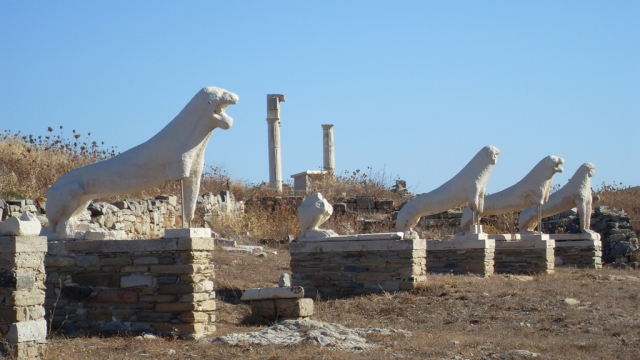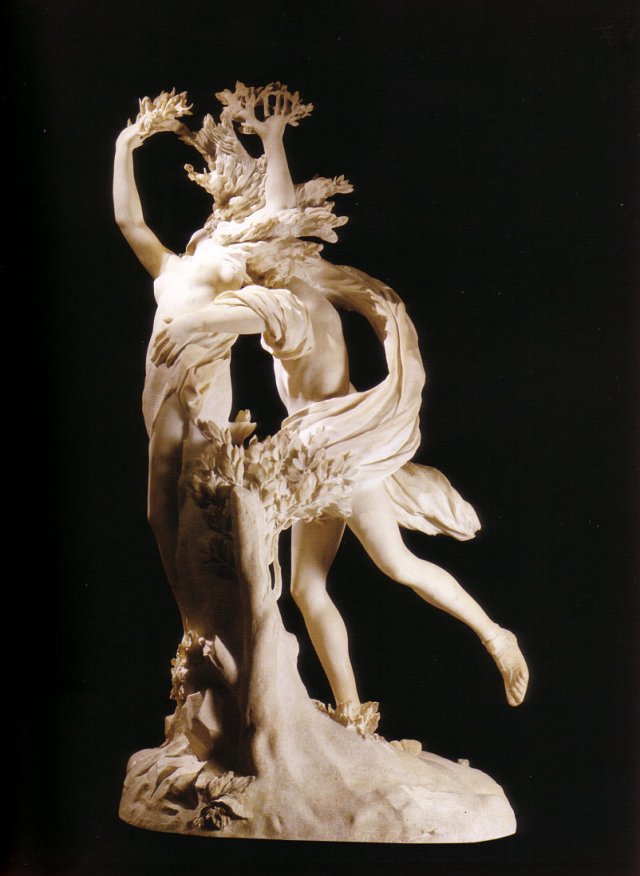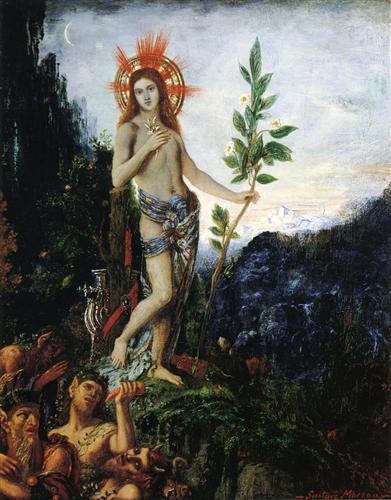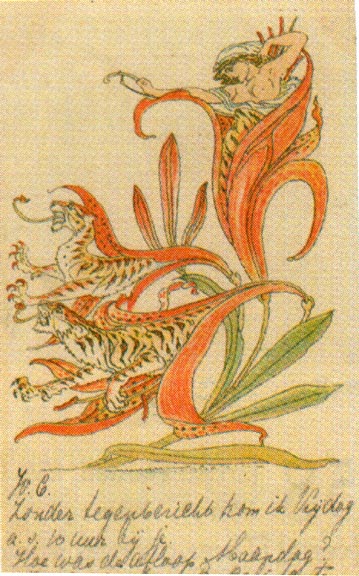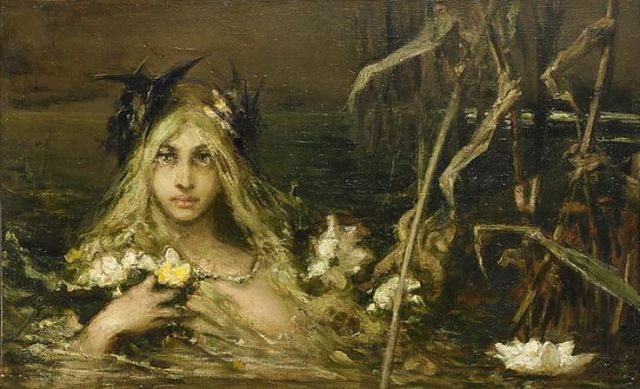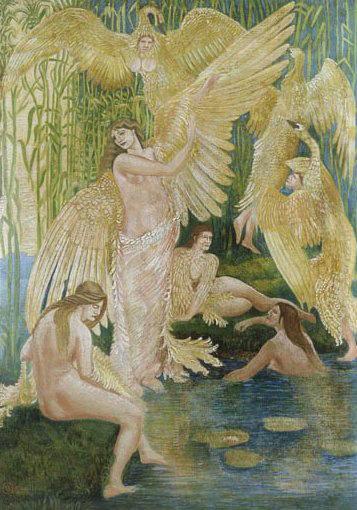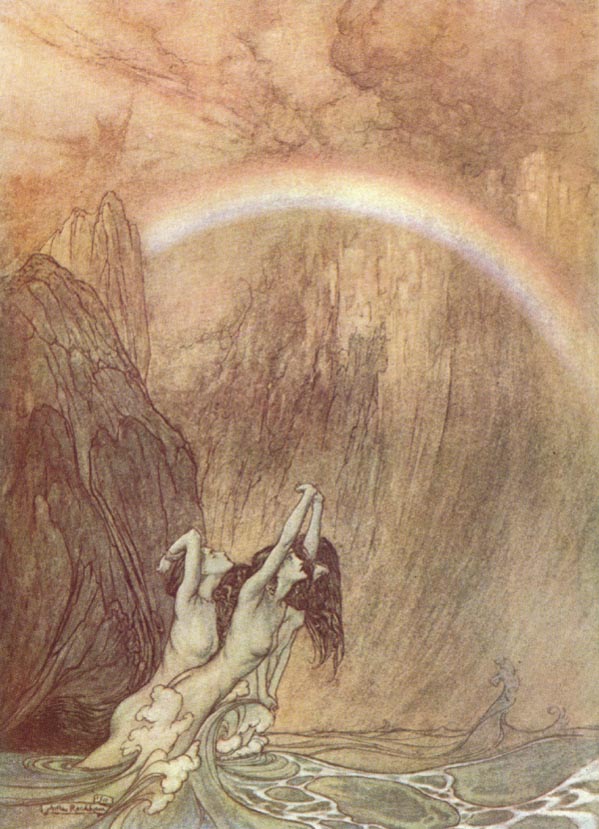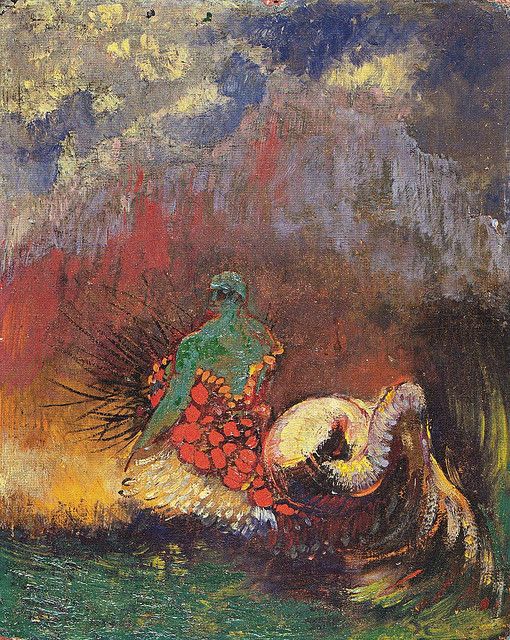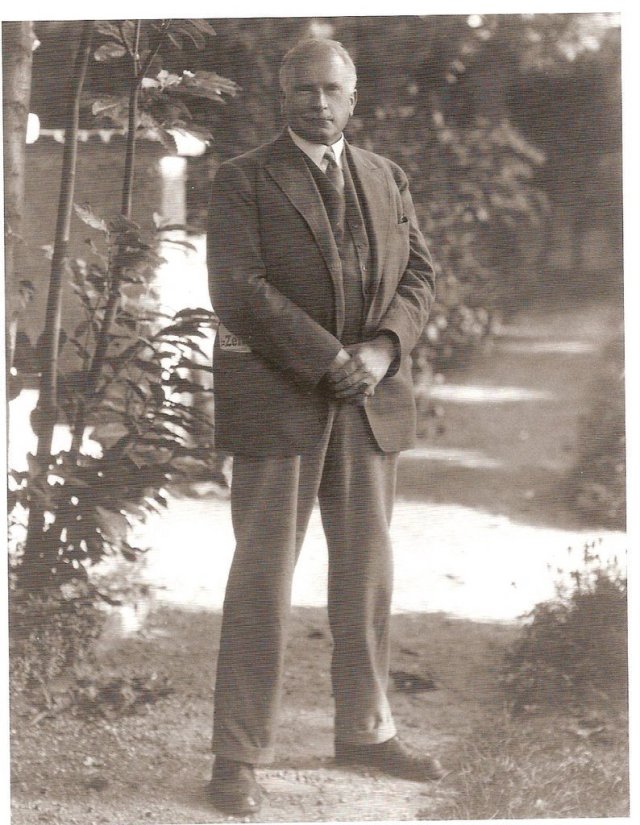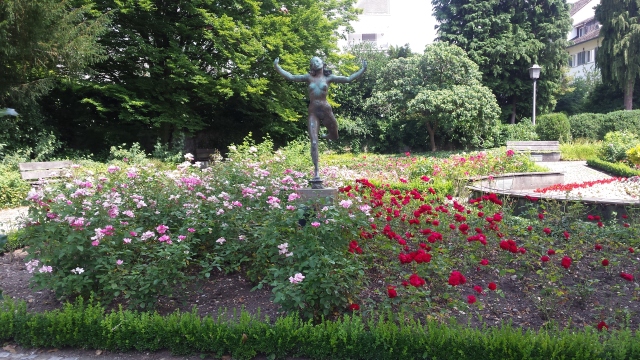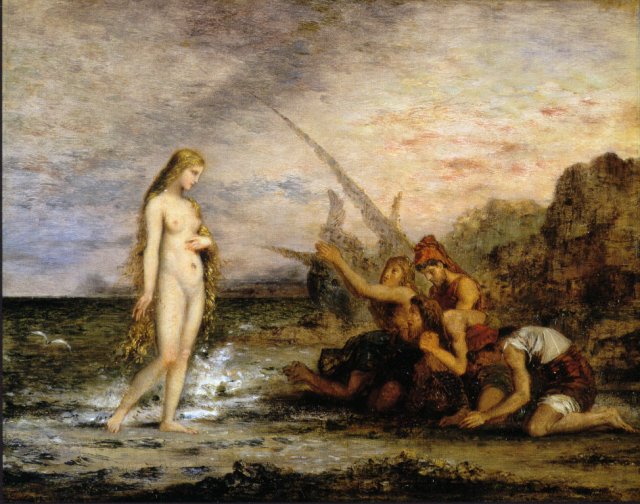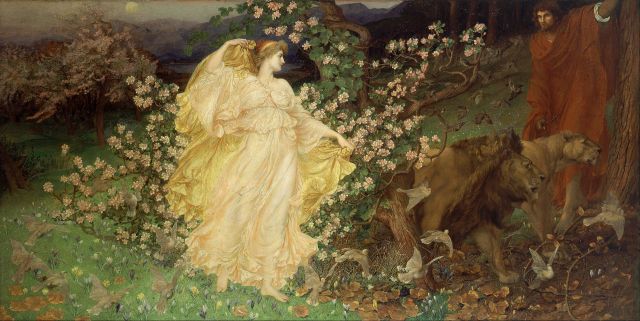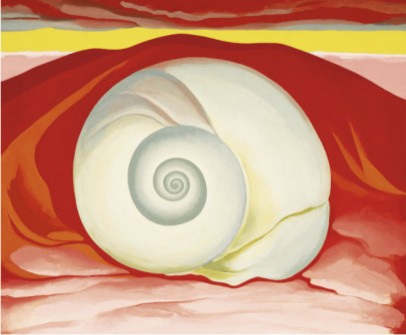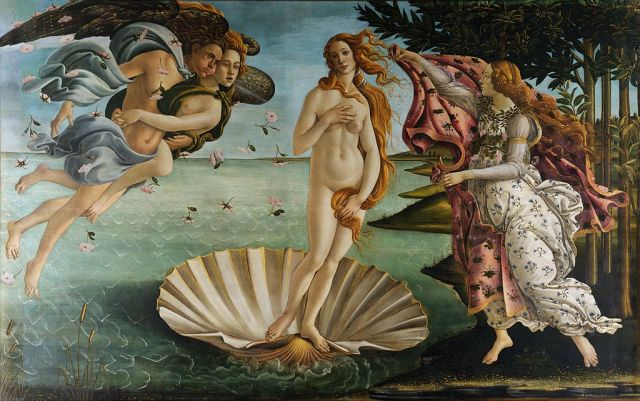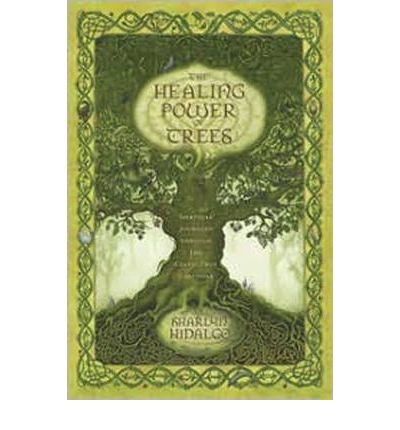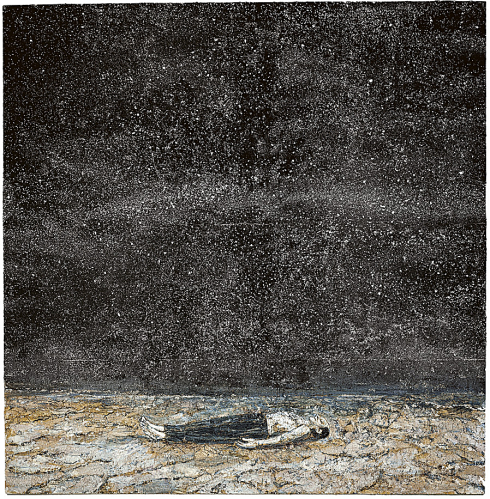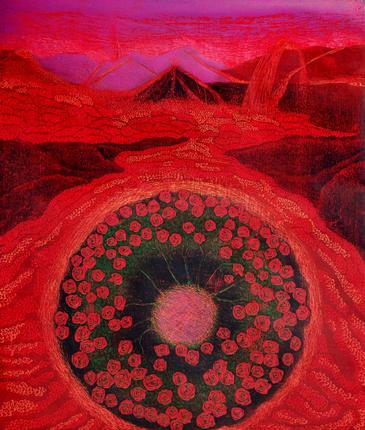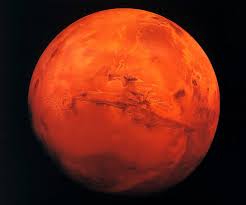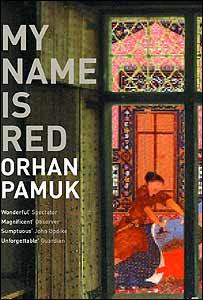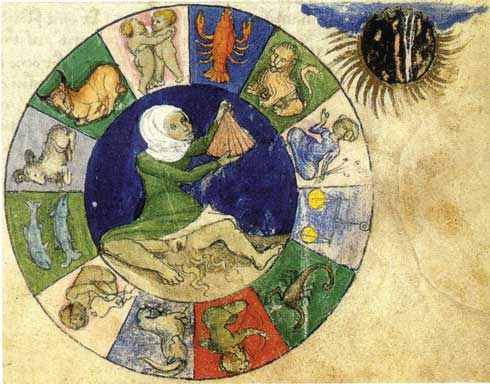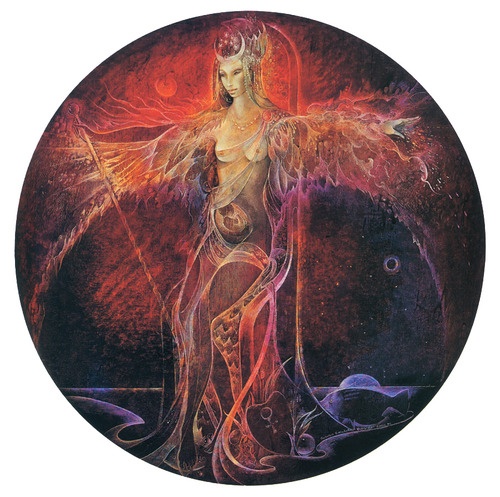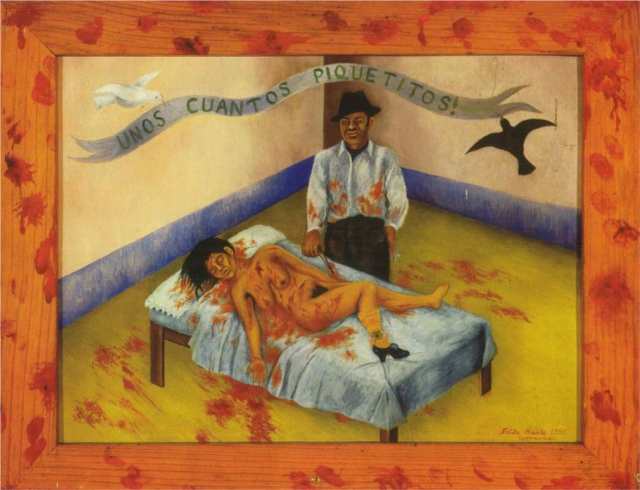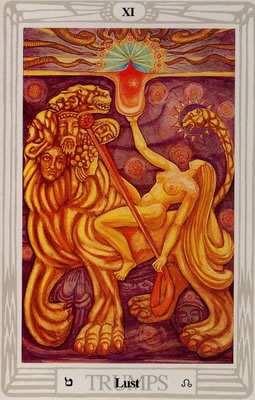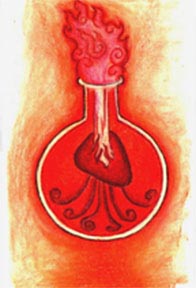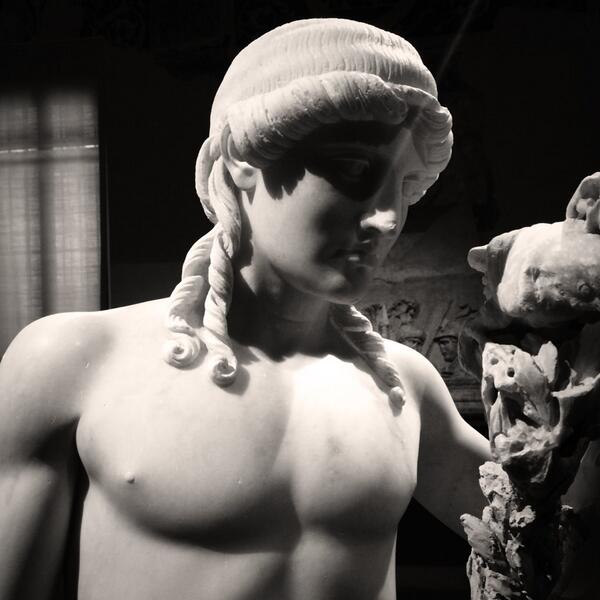
Apollo of Mantua
https://en.wikipedia.org/wiki/Apollo_of_Mantua
1.“I am the eye with which the Universe
Beholds itself, and knows it is divine;
All harmony of instrument or verse,
All prophecy, all medicine, is mine,
All light of art or nature; – to my song
Victory and praise in its own right belong.”Percy Bysshe Shelley, “Hymn of Apollo”
2.“In Classical times, music, poetry, philosophy, astronomy, mathematics, medicine, and science came under Apollo’s control. As the enemy of barbarism, he stood for moderation in all things, and the seven strings of his lyre were connected with the seven vowels of the later Greek alphabet, given mystical significance and used for therapeutic music. Finally, because of his identification with the Child Horus, a solar concept, he was worshipped as the sun, ….and his sister Artemis was, rightly, identified with the moon.”
Robert Graves, “Greek Myths”
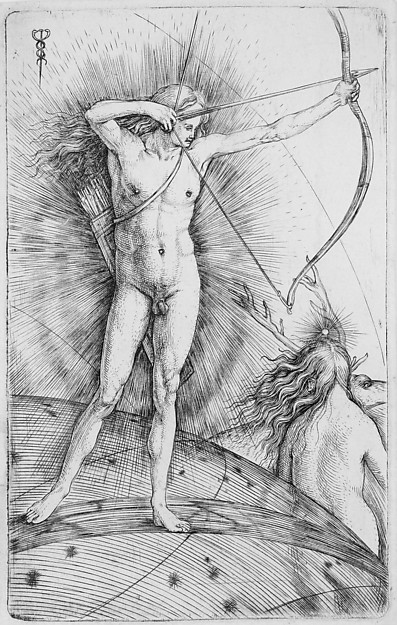
Jacopo de’ Barbari, “Apollo and Diana,” engraving, via http://www.metmuseum.org/collection/the-collection-online/search/360380
- “Coronis was washing her feet in Lake Boebeis. Apollo saw her and desired her. Desire came as a sudden shock, it caught him by surprise, and immediately he wanted to have done with it. He descended on Coronis like the night. Their coupling was violent, exhilarating, and fast. In Apollo’s mind the clutch of a body and the shooting of an arrow were superimposed. The meeting of their bodies was not a mingling, as for Dionysus, but a collision.”
Roberto Calasso, “The Marriage of Cadmus and Harmony”
As nothing can surpass the radiance of the Sun, so no other Olympian god was perceived as more radiant than the superior and grandiose Apollo. Liz Greene calls him “an image of loftiness of spirit,” Walter Otto “the manifestation of the divine amidst the desolation and confusion of the world.” He bestows grace and sublimity even on the most godforsaken places. It was exactly so with Delos, where he was born. Roberto Calasso wrote that it was “a hump of deserted Rock, drifting about the sea like a stalk of asphodel.” Yet, this barren piece of rock was surrounded by swans as if waiting for the miracle about to occur. Leto had been running from the wrath of Hera, who, jealous of Zeus, had forbidden her to give birth on stable earth. A floating poor island of Delos gained a lot from being the birthplace of Zeus’ favorite son. Calasso:
“Then Apollo emerged, and everything turned to gold, from top to bottom. Even the water in the river turned to gold and the leaves on the olive tree likewise. And the gold must have stretched downward into the depths, because it anchored Delos to the seabed. From that day on, the island drifted no more.”
Apollo, the Sun god, has been likened to no less than the Holy Grail by Liz Greene. He is the light of pure divinity of the Jungian Self that is possessed by each of us. He is the inner jewel of royalty that can shine on any desolate landscape and conquer the direst of circumstances. He is the spiritual centre of gravity; he is what sustains us when all the other modes of support have failed. Calasso calls him “unnatural,” “serene,” “abstracted,” looking down on the world, with his “eyes … elsewhere, as if gazing at an invisible mirror, where … (he finds his) own images detached from all else.”
Where there is so much blinding light, the shadow must be deep and equally enormous. Apollo’s dark side is his deadliness, his vicious competitiveness, and utter lack of forgiveness. His is the power that obliterates whatever came before it. As he is a master archer, death by his hand comes swiftly and unexpectedly. The Homeric hymn to Delian Apollo begins with a startling scene showing the gods frightened of Apollo:
“I will remember and not be unmindful of Apollo who shoots afar. As he goes through the house of Zeus, the gods tremble before him and all spring up from their seats when he draws near, as he bends his bright bow.”
Via http://www.perseus.tufts.edu/hopper/text?doc=Perseus%3Atext%3A1999.01.0138%3Ahymn%3D3
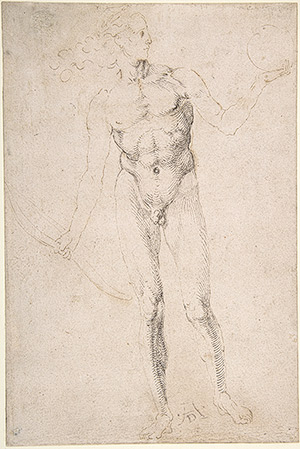
Albrecht Dürer, “Poynter Apollo”, holding a bow and an orb, via http://www.metmuseum.org/toah/works-of-art/63.212
He was a conqueror in love, too, though with varied success. His first love was the aloof nymph Daphne. As Ovid wrote in his Metamorphoses, “the smitten god went up in flames until his heart was utterly afire, and hope sustained his unrequited passion.” And in a further brilliant passage, “admonished by his own passion, he accelerates, and runs as swiftly as a Gallic hound chasing a rabbit through an open field.” According to Graves, the myth of Daphne metamorphosing into a laurel tree to escape the hot pursuit of Apollo refers to “the Hellenic capture of Tempe, where the goddess Daphoene (‘bloody one’) was worshiped by a college of orgiastic laurel-chewing Maenads.” Apollo and a new solar religion took over all major mother earth shrines with the most famous one at Delphi (a subject of my next post).
I admire Roberto Calasso’s perspicacity when he observes that in fact Apollo did not want to possess Daphne. This aloof god was after the idea of Daphne, her divine essence, and to him her worth was embodied in a symbol she left behind – a laurel leaf that he made into a poet’s crown. The Greek word “nymphólēptos “- “possession” comes from the word Nymph. Apollo made extensive use of archetypally feminine trance and possession states in all of his major oracles. He took the wild young girls from Helicon to train and cultivate their skills. The Greeks believed that he imposed the laws of civilization, divine order and measure upon the wild chaos – thus the Muses and Art were born. In the Homeric hymn to Pythian Apollo, summarized by Graf, “As soon as he enters the assembly, ‘the minds of the immortals turn to lyre and song’, and the Muses sing a hymn about gods and men. ‘The fair-tressed Graces and joyful Seasons, with Harmony, Youth, and Aphrodite the daughter of Zeus, hold hands by the wrist and dance’, and Artemis, Ares, and Hermes join them. ‘But Phoibos Apollo plays on the lyre, stepping fine and high.’” Apollonian mousika was an ultimate expression of beauty and harmony; it could still the most turbulent and confused hearts.
The songs performed by and for Apollo were paeans, which also connect with Apollo’s healing powers (the subject of my future article). Paeans, as Graf describes, were sung “before battle or after victory, at the beginning of a symposium, or before any risky undertaking, such as setting sail or, in comic parody, going to court.” They were also sung at weddings, “yet another uncertain beginning.” Apollo was seen as the Averter of Evil addressed by paeans in situations of danger and uncertainty. In a beautiful Orphic hymn to Apollo we read:
“You make everything bloom
with your versatile lyre,
you harmonize the poles.”
Sources:
Roberto Calasso, The Marriage of Cadmus and Harmony, Kindle edition
Fritz Graf, Apollo (Gods and Heroes of the Ancient World), Kindle edition
Robert Graves, Greek Myths
Liz Greene, The Astrology of Fate, Kindle edition
Ovid, Metamorphoses, translated by Charles Martin, Kindle edition
The Orphic Hymns, translated by Apostolos N Athanassakis, Kindle edition

